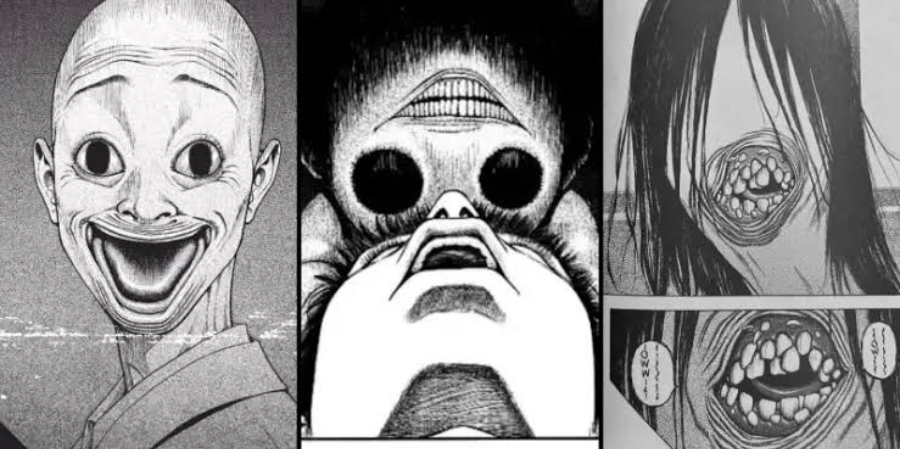

PTSD Radio aka Kouishou Radio is a chilling horror manga series created by Masaaki Nakayama. It gained significant attention for its unique concept, unsettling stories, and artistic style.
The Mangaka: Masaaki Nakayama
Unfortunately, not much is publicly known about Masaaki Nakayama. The series abruptly ended after six volumes. Rumors suggest Nakayama stopped due to the psychological toll of creating such disturbing content.
The series is published in English by Kodansha Comics USA since October 31, 2017 and is available for purchase in both physical and digital formats. Due to the graphic nature, be sure to check content ratings before purchasing.
1) Story
PTSD Radio is not a single narrative but an anthology series. Each chapter or volume features a standalone story, often unconnected to the previous one. This episodic format allows for a wider exploration of horror themes.
The series revolves around a mysterious curse called "Ogushi." Little is known about its origins, but it's linked to human hair. The stories explore how Ogushi manifests in different ways, inflicting psychological and physical torment on its victims.
Similar to Junji Ito's works, PTSD Radio takes ordinary things and twists them into nightmarish scenarios. Hair, a familiar part of our daily lives, becomes a source of dread. This approach makes the horror feel more relatable and unsettling.
2) Art Style
Nakayama's art is meticulous, with a focus on creating a realistic and disturbing atmosphere.
The character designs are expressive, effectively conveying fear, confusion, and despair.
The series features grotesque imagery and body horror elements, pushing the boundaries of what's considered comfortable viewing.
Unlike some horror manga that rely on stark simplicity, PTSD Radio features detailed backgrounds. This creates a more grounded and believable world, making the horror even more effective.
Dramatic use of light and shadow is prevalent, creating a sense of mystery and danger. Shadows often hide unseen horrors, leaving the reader to imagine the worst.
3) Storytelling and Themes
Each chapter of PTSD Radio can be seen as a different facet of trauma. The stories don't shy away from depicting the emotional and psychological scars that traumatic experiences leave behind.
A recurring theme is the feeling of isolation and powerlessness that often accompanies trauma. The characters find themselves trapped in nightmarish situations with little control over their fate.
The series often employs unreliable narrators, making it difficult to discern reality from delusion. This adds to the overall sense of unease and disorientation.
Hair is a powerful symbol throughout the series. In Japanese culture, hair is often seen as connected to a person's life force or spirit. By using hair as a conduit for the curse, Nakayama taps into deep-seated fears.
4) Theories about this story
The exact nature of the Ogushi curse remains a mystery throughout the series. Is it a supernatural force, a manifestation of repressed trauma, or something else entirely? This ambiguity adds to the series' intrigue.
There's speculation that Nakayama may have drawn inspiration from real-life events or personal experiences. The raw portrayal of trauma suggests a deep understanding of its psychological effects.
The sudden end of the series after six volumes leaves many unanswered questions. Was it due to editorial decisions, creative burnout, or something more sinister? The theories continue to fuel discussion among fans.
5) Reviews and Reception
Despite its dark themes, PTSD Radio has received critical acclaim for its originality, masterful storytelling, and the sheer effectiveness of its horror.
The series is often compared to the works of Junji Ito, another master of psychological horror manga. Both creators share a talent for taking ordinary things and turning them into sources of terror.
The graphic content and intense psychological horror may not be suitable for all readers. Be sure you have a strong stomach before diving in.
6) Conclusion
PTSD Radio is not for the faint of heart. The graphic content and disturbing imagery can be genuinely upsetting. If you're easily scared or troubled by violence, it's best to steer clear.
However, for those who crave a truly unique and terrifying horror experience, PTSD Radio is a must-read. Just be prepared to enter a world where the ordinary becomes horrifying, and the mind can be its own worst enemy.


